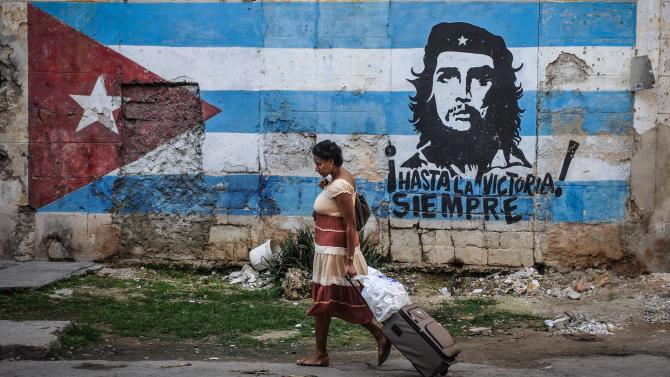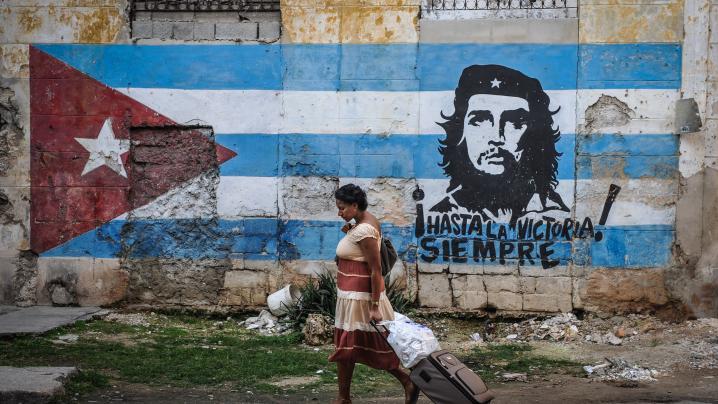[ad_1]

A woman walks by a mural with the Cuban flag and an image of revolutionary leader Ernesto Che Guevara in Havana on January 23, 2015.
YAMIL LAGE/AFP/Getty Images
When Air Force One lands at Havana’s Jose Marti Airport Sunday afternoon, President Obama will quickly get a symbolic look at the daunting challenge he faces to make the changes he’s forged between the United States and Cuba a lasting—and meaningful—legacy of his presidency.
Through a series of executive actions beginning in 2009, Obama has eased restrictions on the half-century-old economic embargo that was imposed on Cuba after Fidel Castro came to power in 1959. He’s loosened the ban on American travel to the island; opened the way for regularly scheduled commercial airline flights between the U.S. and Cuba; created more opportunities for U.S. firms to do business there; ordered a change in banking rules to make it easier for Cuba to use dollars in international financial transactions and reestablished diplomatic relations with Havana.
But as the plane that brings Obama, his wife, two daughters and mother-in-law to Cuba taxies down the airport’s only runway, it will pass two terminals that are chilling reminders of the still troubled relations between the United States and its largest Caribbean neighbor.
One is the terminal for all flights from the United States. It opened in 1988 and was renovated in 2010. A sprawling, high-security building, it is a symbol of the mistrust that’s defined relations between the United States and Cuba’s communist government for more than half a century.
The Fidel Castro-led revolution chased into exile Fulgencio Batista, the right-wing Cuban dictator who was a front man for American mobsters and a puppet of corrupt U.S. businesses. Since then, a succession of U.S. presidents embraced a regime change policy that was hell bent on toppling the government Castro installed. It was an obsession that put the United States in league with terrorists. Two of them, Orlando Bosch and Luis Posada, became legendary figures in the coffee shops and bodegas of south Florida despite their alleged involvement in a string of hotel bombings in Havana and the 1976 bombing of a Cuban airliner that took the lives of 73 people—many of them children.
According to a recently released State Department document, Bosch and Posada had links to the CIA and made the spy agency aware of their intention to bring down the plane—a terrorist plot that was never communicated to Cuba. Bosch, who Attorney General Richard Thornburgh once described as an “unreformed terrorist,” died in 2011. Posada still lives freely in south Florida.
Also, before it comes to a stop, Obama’s plane will pass the airport’s international terminal. A modern structure that opened in 1998, it was built by a Canadian company with financing from a development agency in that country. Jean Chretien, who was Canada’s prime minister at the time, showed up for the opening ceremony—18 years ahead of Obama’s breakthrough visit.
The international terminal is the most visible symbol of Cuba’s ability to survive the economic noose the U.S. put around its neck, and a worldwide defiance of the U.S. embargo that morphed into a blockade of the American companies it’s kept from doing business in Cuba.
Both terminals are symbols of the pragmatism and adaptability of Cuban leaders who are committed more to preserving the revolutionary ideals that brought them to power than they are to clinging to communist dogma. These terminals are symbols of a Cuban nation that craves an end to its Cold War standoff with the United States, but that is just as adamant in its refusal to give in to American hegemony.
Hopefully what they represent will not be lost on Obama when he steps onto Cuban soil today for what may well be the most important foreign trip of his presidency.
[ad_2]





















